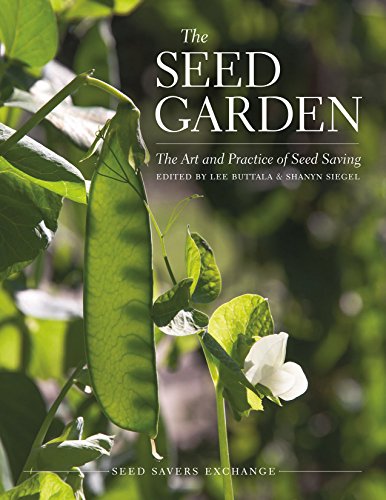In the summer of 2015, I visited Seed Savers Exchange, a remarkable mecca for growers of heirloom vegetables, herbs, and flowers. Located in rural Iowa, this organization has become world-renowned for its preservation of over 20,000 varieties of mostly food plants, not only providing safe storage for the seeds, but also maintaining the vitality of their collections by selective growing, germination testing, and researching the history of their sources.
While I would encourage all gardeners to visit Seed Savers, this may not be practical. So instead, considering reading The Seed Garden: The Art and Practice of Seed Saving, published by the Exchange (and written by Micaela Colley and Jared Zystro) in which the basic philosophy and practices of the organization are distilled into very useful handbook for the home gardener.
Like many gardeners, I’ve done a bit of seed saving, and this book starts at that level – assuming a basic understanding of good gardening practices with a reminder that saved seeds are only useful from open-pollinated plants crossed with other plants from the same population. Hybrids will not breed true.
I learned in the entry on lettuce – considered easy for beginners – that these plants are almost completely self-pollinating, and that different varieties only need 10 feet of separation to ensure purity. Lettuce produces abundant seeds, but the quality is best on plants that are allowed to grow to maturity with minimal harvest, suggesting its best to designate a few stock plants for your breeding purposes.
There are also “Master Class” sections that cover more advanced subjects, including building isolation cages, avoiding inbreeding, and doing your own germination testing. Most interesting is the process of extracting seeds from really messy plants, like tomatoes, but even with these, the reader is encouraged to try, using common kitchen tools.
The tone of the book throughout is positive and encouraging. Even the usual negatives can be turned around. “For many gardeners, the sight of bolting lettuce signals that its leaves have turned bitter and unpalatable, but these emerging flower talks also signal an impending harvest of ripened seeds.” After reading this book I’m ready, with my patch of ‘Red Velvet’ lettuce, to become a serious seed saver.
Published in Garden Notes: Northwest Horticultural Society, Spring 2016